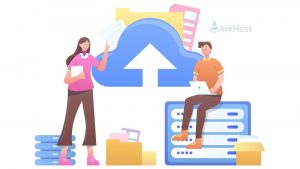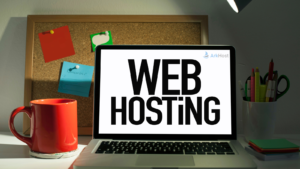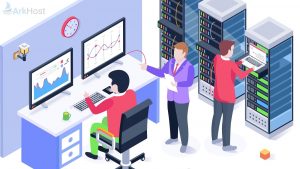Cloud migration is moving business applications from a provider’s own on-premises infrastructure or cloud to another provider’s cloud platform. A company gets a virtual pool of the resources it needs – compute, networking, storage – and reduces administration costs and improves the customer experience.
Thanks to virtualization:
- The flexibility of the IT infrastructure increases. It’s easier and faster to scale, configure and reconfigure.
- Business risks are reduced. Upgrading to higher-end equipment with well-developed monitoring systems and infrastructure protection from third-party influences increases business stability.
- Productivity increases. You don’t have to squeeze 120% capacity out of old hardware or use 60% of it. With cloud resources, you get the power you need right now.
- Your data‘s security is assured. The cloud provider’s sophisticated, multi-layered data protection systems protect your confidential information more reliably.
- Compliance with standards is ensured. The cloud provider’s infrastructure undergoes necessary certifications and validations regularly. This ensures that customers receive solutions that comply with national and international regulations.
- Cost optimization. The company does not need to invest in equipment, maintain a large IT park or have a staff of technicians.
Companies’ IT infrastructure is typically a hybrid of public, private cloud and on-premises hardware.
Businesses are actively investing in the cloud, but the pandemic has spurred interest in virtualization.
Why do you need to migrate to the cloud?
Many arguments favour moving infrastructure to a cloud platform, and they vary from company to company. Some people choose to move their IT infrastructure to the cloud as an IaaS model to expand storage capacity or accelerate computational processes. In contrast, others prefer the cloud as a backup testbed, development environment, or to host non-critical services. So, depending on your specific business goals, moving to the cloud will help differently.
In other words, renting a cloud server helps improve overall business performance. A company gets to use computing power, data storage, and communication channels without capital expenditure and the need to maintain its own server room.
Migration to the cloud is the first step to digital transformation, which is urgently needed by any business that wants to remain competitive in the market and be able to launch new IT projects.
If you want to reduce IT infrastructure costs, it makes sense to move backups, disaster recovery and file storage to the cloud. Improve employee productivity with virtual desktop services.
Migrating to the cloud is a smart choice when a company’s business applications consume more resources than local hardware can provide or when the company’s own infrastructure does not meet current business needs due to obsolescence.
Old, underpowered servers or other equipment severely harm the company’s business processes, slowing down all departments. In addition, security risks arise as vendors withdraw support for outdated hardware and stop issuing security updates.
Using legacy systems is inefficient in the long run. A company will still face performance problems, growth constraints and security risks. The seeming economy of upgrades is actually detrimental to business.
Cloud solutions win over the on-premises infrastructure on a long list of criteria. The cloud is easier to maintain, operating costs are lower, and application changes can be made much faster.
What cloud migration is like
There are two types of migration:
- from physical infrastructure to cloud infrastructure
- from one cloud platform to another (from a different provider)
This process requires preparation but is usually worth the effort, resulting in cost savings and greater flexibility.
There are several approaches to migrating applications to the cloud, ranging from migrating old applications to creating a new application to replace the old one.
Lift-and-shift
An organization’s applications are not changed but simply placed in the cloud. Lift-and-shift can include copying application binaries, creating and configuring virtual machine (VM) images, creating security groups, setting up elastic IP and DNS addresses, and migrating to a new database in the cloud.
Refactoring
The approach involves optimizing the application to run in the cloud. This process may take some time to repurpose the application components and change the code. But eventually, the refactored application can take full advantage of the cloud architecture. This approach is relevant for migrating legacy applications and is the most profitable method for long-term business results.
Re-platforming
A hybrid approach implies a partial refinement of the systems architecture. For example, implementing a managed database or using dynamic scaling functionality. This migration strategy takes longer than the first method, making the company more efficient and adaptable to the cloud. Additional benefits emerge. For example, using autoscaling for internal workloads can reduce the burden on DevOps when managing instances manually.
Stages of migration to the cloud
Computer hardware architecture differs from company to company, so the process of IT migration is always different. But the cloud migration plan always includes the following steps:
Step 1: Data migration
Creating a copy of company data in cloud storage is a mandatory first step when migrating to the cloud. It is essential to choose reliable, fault-tolerant storage with backup systems. After all, the more layers of protection your storage system has, the more secure your databases will be.
Please note that copying raw data is only part of the initial migration process. Be sure to check the formats and schemas of the data you export from one repository to another.
Step 2: Replication
When you have finished exporting the local storage snapshot and migrated the data to the cloud, you need to set up your synchronization processes. Ongoing replication is more complex than a replication operation as it is a series of incremental replication operations. Each procedure requires recording changes to the data and its schema and applying them to cloud storage.
Any data replication solution in the cloud and on-premises infrastructure (or another cloud) needs to be tested for latency and reliability. Replication can be set up independently, or you can choose a data pipeline service to handle continuous data and schema replication. Once you have everything set up, you can migrate the rest of your infrastructure.
Step 3: Ensuring Security
Setting up a cloud infrastructure, while technologically complex, proves to be easier than creating a replica of your on-premise infrastructure. You can’t rush into this, as cybersecurity is one of the reasons companies are afraid to adopt the cloud. With cloud platforms, corporate assets are no longer behind a manually configured firewall, and the network perimeter does not seem to exist. In fact, this is not the case; there are both firewalls and perimeters. But fears remain, so it is essential to think carefully about all aspects of data and application security.
To be effective, the protection process requires the involvement of various specialists beyond the IT department, as migration entails technological and structural changes.
Moving to the cloud can change your business’s functional roles and operations. And employees may need help learning new systems and workflows. Work processes themselves won’t change, though, and the work environment usually stays the same.
In general, the main difficulties for the company are choosing a provider, configuring security and ensuring that applications and services interact with the cloud.




